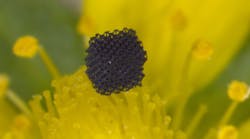Graphene aerogels are lighter than air but strong as steel, and they’ve already proven useful in aerospace, energy storage, and insulation. And although there have been recent advances in ways to 3D print aerogels, creating complex structures has been elusive, hampering the material’s full potential.
One challenge is that 3D printing graphene aerogel has been done using direct-ink or other extrusion-based methods in which graphene layers are squeezed through a nozzle, like toothpaste from a tube. This process limits aerogel parts to simple geometries. To overcome this limitation, a research team at Lawrence Livermore National Laboratory have focused on using a method known as projection micro-stereolithography to 3D print aerogel parts.
In projection micro-stereolithography, ultraviolet light projects a part’s image into a photosensitive liquid resin, which gets cured and hardened into the shape of the image. Using this method, researchers reduced the resolution possible for 3D graphene aerogels printed through extrusion-based methods from around 100 microns to about 10 microns.
Because the performance of supercapacitors and batteries are often limited by diffusion length, the ability to print complex structures from graphene aerogel is not only good news for battery technology, but it also opens the door to numerous applications that could benefit from computer-driven optimized design. These include aerospace, reactors, desalination plants, and chemical processing. In addition, graphene can now be printed into virtually any shape at a high resolution, letting the material be used in a host of other applications.











